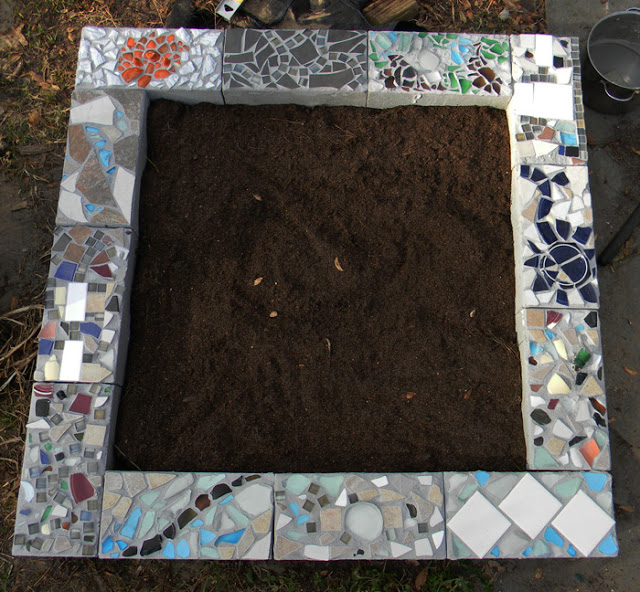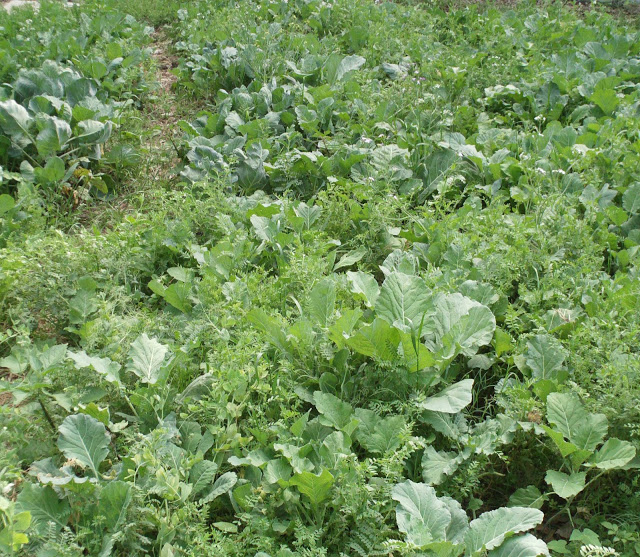Let’s talk survival gardening for beginners. It’s a scary topic, imagining collapse while looking at your lousy sweet potato harvest, but stick with me.
A few days ago, on this post, mrlespaulman stated his discouragement with his garden thus far:
“While having a farm in my backyard that sustains my family is my main
goal, I’m starting to learn that its quite a lot harder than I thought
it would be. Between the bugs and my lack of planning, I don’t know how in the world I could end up getting enough of a harvest to put up a
decent amount–not to mention having enough left over to eat right then. It always seems I end up with more hot peppers than I know what to do with, leafy greens full of holes, split radishes, tiny onions, rotting
squash, and only about 15 green beans at a time…lol. Any pointers on
the planning aspect of survival gardening for a complete and total n00b?
Thanks!”
There are few things more discouraging than jumping into an exciting new venture… and then being beaten back. The problem is usually not the bugs… the soil… or even making mistakes; it’s usually a problem of scale.
I don’t know if this is the case for mrlespaulman, but I do know that in times past I had grand and glorious garden plans that I put into execution… only to be run over by cutworms, poor growth, lousy yields, drought, etc. etc. etc.
Creating solid and productive gardens usually doesn’t happen right away. Practice makes perfect. Starting on a grand scale and hoping to put away piles of produce at the end of the year WILL make you discouraged.
I usually tell folks to start by growing their own salads, herbs or both. If you can keep a few pots of salad greens going… and a bit of basil for the tomato sauce – you’re officially gardening.
From that point, I’d move on to a 4′ x 4′ bed… or a 4′ x 8′. If you try to build a ton at once, you get burned out. You scrimp on soil amendments. You’re stretching compost and you’re not managing anything well. If you can manage a 4′ x 4′ patch really well, you’ll probably get more out of that than you would with a badly managed 4′ x 40′ patch.
Put serious, loving care into a small space, watching it daily, fertilizing with good stuff like kelp meal and compost, and you’ll start to build confidence and the skills you need to manage a serious survival garden.
Now – as for having more hot peppers than you know what to do with…rotting squash… tiny onions, etc. – that’s Florida!
Some things are MADE to grow here. Peppers, for instance. They love the heat, they love the sand and they produce like crazy – sometimes for years.
Most squash don’t like the humidity. Rot city. Onions don’t like the heat and the weird rain cycles. Radishes are the same. Grow them really early in the spring or plant in the late fall. Otherwise: kaput!
Green beans usually do all right here, depending on variety. Northern pole beans often aren’t happy – and some of the bush beans tend to become bug feed pretty fast. Snake beans are almost unkillable. Other varieties usually produce less.
If you’ve got soil that hasn’t grown beans or legumes previously, they
may be suffering from the lack of nitrogen-fixing bacteria, in which
case I’d feed them with diluted urine or compost tea to give them a
boost.
BUT – there are crops that are really, really good for Florida. Look around your neighborhood. Who is growing what? Ask them how they’re growing it. Look at local farms – ask them what they grow and how they grow it. Go to the local extension office and ask them what grows best in your area. Is your area warm enough for highly productive tropical plants? Is it mostly field crops? Are their orchards? Do lots of edibles grow in the wild? Ask around and read up.
Then… take that data with a grain of salt, and start experimenting. I guarantee you: there are plants that will produce bushels of food for you. Your goal is to identify what those species are. Head knowledge is fine: but actually experimentation is where you’ll find glory.
In my area, I’ve learned (through observation of my plots and those of others) that these species generally do well:
Cassava
Sweet Potatoes
Mustard
Broccoli
Snake Beans
Seminole pumpkin
Loquats
Persimmons
Cayenne peppers
Florida Cranberry
Winged yam
Kale
Turnips
Mulberries
Blackberries
Collards
These crops generally do poorly or simply so-so (at least for me):
Beets
Onions
Large watermelons
Potatoes
Sweet peppers
Brussels Sprouts
Cucumbers
Jerusalem artichoke
Don’t get discouraged. Keep reading, keep experimenting, learn to grow really good gardens in a small area – and learn to eat weeds. You’ll accumulate knowledge and skills rapidly if you don’t give up… and in a few years, you’ll be laughing at your past harvests.
Go forth and garden!
Check out my book Florida Survival Gardening for more info on survival gardening.




6 comments
Thanks a lot, David!
No problem.
One more thought: if you get a chance to visit a gardener that is doing well in your area, ask them if you can help do anything or offer to weed a few rows… getting connected with more successful farmers is always a plus.
This is appropriate for today. Yesterday my son and I put some good dirt plus some old mulch and some coffee grounds into a couple of long planter/pots, then planted a few seeds out of two packets I got at Baker Creek Heirloom seed company a month ago. Red romaine lettuce and Rat's Tail Radishes. We soaked them with water and put them where they would get sun and still be out of the way of the construction and the duck's nest. Today they are all dug up. I assume it was NOT the construction guys that did the digging.
I bought some chicken wire to build some kind of tent or something over them to keep the rabbits and deer from eating them, but I thought I would have a few days to do that before they sprouted. Guess I was wrong. I'm just glad I didn't plant all the seeds. I just tried a few.
Yikes. My sympathies. I always hold back some seeds as well.
Along the same lines: I had a coon dig up a bunch of my newly planted corn the other day. Fortunately, that night I caught, shot and buried the little bastard.
you mean you didn't cook and eat the coon? that's not very survival of ya :)
i would add cowpea (black eye pea) and peanut to the list.
and for so-so i would add almost all grain crops.
Good advice on starting small… and not scrimping on the compost…
Wonder if you couldn't emphasize the importance of organic materials a little more…
In the florida sand… or my sand for that matter… there's no nutrients, the water disappears as quickly as it gets applied… can totally be disillusioning to attempt to grow anything…
not to mention the voles…
Comments are closed.